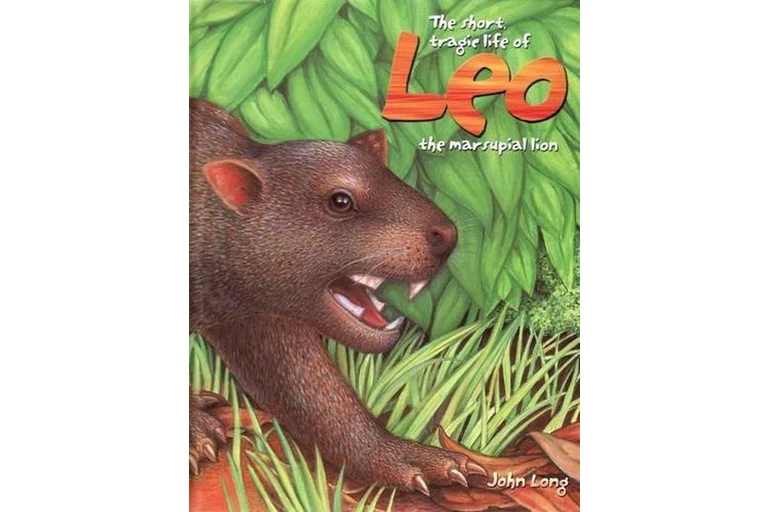The skull and bones on the endpapers propel the viewer into the world of the marsupial lion—Thylacoleo—one of Australia’s most extraordinary ‘megafauna’—extinct giant animal. It is thought that this animal lived approximately 500,000 years ago. His remains, discovered in a remote cave on the Nullarbor Plain, reveal more about him. This fascinating book recreates Leo’s life in the period leading up to his early death, followed by scientists’ discovery of his remains In April 2002.
An early double page spread provides 12 animal images, including their scientific names, of today’s animals that have adapted to Australia’s harsh climate. A subsequent page shows a sample of the creatures living one million years ago. One of these animals was similar to the African lion except that it was a marsupial, with a pouch for its young. Its scientific name was ‘Thylacoleo carnifex’, which means ‘pouched lion that eats flesh’. Leo’s story reveals how one such animal lived then and how we now have its preserved remains.
We learn about Leo’s early life, how he was protected in his mother’s pouch, until he and his siblings were large enough to explore the world on their own. One day, Leo is out hunting and falls into a large, dark cave. There is no way out, no food and very little water. Eventually Leo dies there in the cave. All that remains are his bones. The author offers comfort to readers: ‘He lay down and went into a deep sleep. He dreamed of his brother, sister and mother and happy times playing hunting games’. Although this anthropomorphic statement cannot be verified, it is nonetheless a reasonable assumption that may comfort young readers.
In 2002, cave explorers searched the Nullabor Plain and discovered the cave with Leo’s bones. The Museum of Western Australia organised an expedition and recovered the bones. The book includes photographs of Leo’s final resting place, his bones, scenes of the scientists’ descent into the cave, examining the remains, then preserving and removing the bones from the cave. Leo’s bones are on display in the Western Australian Museum.
A final page, ‘The Great Unsolved Mystery’, explores various theories about why the megafauna mysteriously died out between 40,000-50,000 years ago. ‘The Short Tragic Life of Leo’ concludes with a glossary and pronunciation guide with accompanying images.
Dr John Long, author of ‘Leo’, is a renowned paleontologist. Jill Ruse has illustrated projects for the Western Australian Museum over the years. Long and Ruse also created the picture book, ’Gogo Fish! The Story of the Western Australian State Fossil Emblem’, a CBCA Honour Book in the 2005 Eve Pownall Awards.

